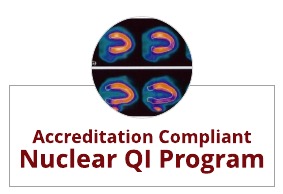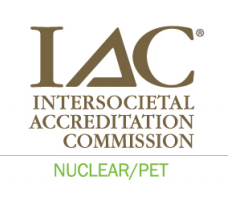This month we reviewed radiation safety and patient-centered nuclear cardiology protocols. To close out our March focus on nuclear cardiology, this week we will review IAC nuclear accreditation requirements for on-going Quality Improvement (QI) and provide easy steps to creating your own program.


The quality improvement program was updated in 2016. Facilities must have a quality improvement process in place to evaluate Quality Improvement (QI) measures. The assessments are an ongoing process with monthly or quarterly review of results. The facility must have a minimum of two QI meetings per year. At least one of those meetings must be used to discuss the QI analyses and any QI-related topics. The IAC Nuclear QI program must include the following measures:
The facility must evaluate the appropriateness of each test. This requires checking that your studies are ordered for clinically necessary indications.
AUC should be measured using consecutive exams over a two-three week period in order to evaluate 5% of the annual volume. For smaller volume facilities, use a minimum of 30 consecutive exams. The Centers for Medicare and Medicaid (CMS) is in the process of implementing an aspect of the Protecting Access to Medicare Act (PAMA) of 2014 that will introduce a new framework for applying AUC. In 2018, PAMA will require ordering physicians to consult AUC using a CMS-approved CDSM with nuclear cardiology. We will provide additional updates on this CMS requirement as more information is made available.
IAC provides many different suggestions for technical quality review and these can be reviewed in their standards. One of the measures listed is ‘dose verification of administered radioactive dose to prescribed dose listed in protocol’. This is a relatively easy measure to complete:
Always keep patient safety front and center. Review our recent articles related to nuclear radiation safety.
Your QI Plan must also include evaluating the quality and accuracy of Interpretation. Two ways to accomplish this measure would be through peer review and/or clinical correlation. There are many ways to complete physician peer review (peer review forms, physician meetings, assigned through your PACs system), just find the one that is easiest for you.
We always remind our clients that there is not a whole lot gained from correlating normal nuclear studies with normal cath results. Please try and identify abnormal nuclear studies to correlate with cardiac cath, cardiac MRI, CTA, etc.
All facilities must track report completeness and timeliness. There is no set number of studies that must be monitored. Your facility may choose how many as long as this is an ongoing measure. Your review should include ensuring final reports include all mandatory reporting components and that the turnaround time is compliant.
All MPI interpretations must be available within one working day of the examination. (An interpretation may be in the form of paper, digital storage or accessible voice system.)
All accredited facilities should have standardized reporting in place. The 2016 IAC Nuclear Standards update included additions to some mandatory components of a complete MPI report and include:
We hope you enjoyed our quick overview of how to implement a compliant quality improvement program into your nuclear cardiology lab. If you ever need assistance just contact us! We can provide a free phone consultation to answer any questions and address any hurdles you are facing within your lab. We are also available for hire through one of our QI services. We love helping improve diagnostic imaging through accreditation and education.
Judith Buckland, MBA, RDCS, FASE
 Learn more: Nuclear Cardiology Quality Improvement Services
Learn more: Nuclear Cardiology Quality Improvement ServicesReferences:
Intersocietal Accreditation Commission Nuclear Accreditation Standards and Guidelines, 2016 (latest standards at the time of this article)



